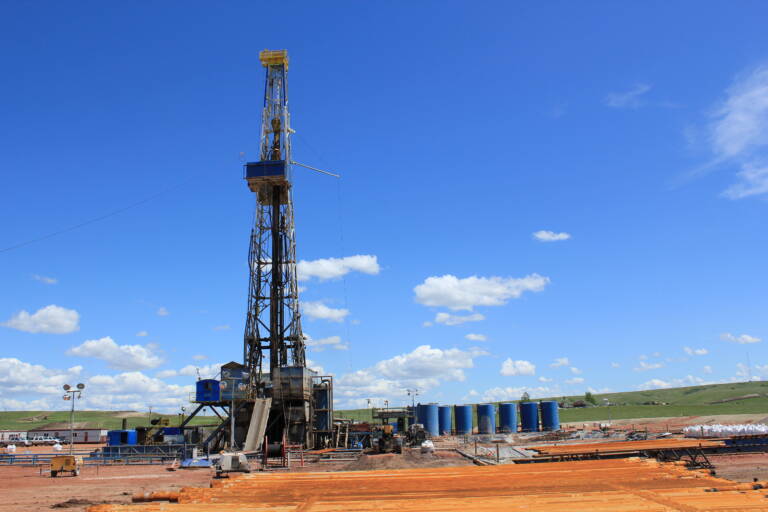According to many analysts, oil will not exceed 100 USD per barrel in 2024

Rising non-OPEC+ oil production and significant storage space held by the OPEC+ group will continue to put downward pressure on crude prices next year, analysts say.
Unless there is a major geopolitical escalation resulting in supply disruption – which cannot be discounted – oil prices are unlikely to reach $100 a barrel in 2024, as American production and exports are increasing more quickly and more than expected and the market sentiment on demand is negative, especially for the first half of 2024.
With the latest cuts announced for the first quarter of 2024, the OPEC+ alliance is trying to keep a tight grip on global oil supply. But the group must contend with record U.S. oil production and rising supply from other non-OPEC+ producers, including Brazil, Guyana, Argentina, Suriname, Canada and Norway. Brazil has been invited to join OPEC+ starting from January 2024, but has already declared that it will not participate in any production cuts and this is a sign that, in any case, production will remain abundant.
OPEC+ is trying to maintain a floor in oil prices (at the expense of its market share), but may fail to support prices sufficiently . This is especially true if the group fails to extend the cuts beyond March 2024, analysts say. At that point there is a risk of a "free all" on production, especially on the side of African countries.
The group's production cuts "help defend oil prices, but more cuts equate to more spare capacity," Stacey Morris, head of energy research at VettaFi, told MarketWatch . “This dynamic probably limits the rise in oil prices”, but, we add, it also limits the revenues of the countries party to the cartel agreement.
Warren Patterson, head of commodity strategy at ING , wrote in a note earlier this month that "given the scale of the cuts we are seeing, OPEC is sitting on a substantial amount of spare capacity."
According to ING, OPEC, including Iran, has spare capacity of around 5.5 million barrels per day (bpd).
“This spare capacity should provide some comfort to markets, as if we were to see significant price strengthening, one would expect this capacity to start coming back into the market,” Patterson said.
In any case, OPEC+'s management of the oil market will be key to understanding where prices will go next year, he noted.
Related: Santa Clauses benefit from falling gas prices
ING sees Brent crude trading at $80 early next year, while it expects it to average $91 a barrel in the second half of 2024, when the market will return to deficit. However, a profitable price for producers.
However, non-OPEC+ supply is growing at a faster pace than previously expected, led by record U.S. crude production, which has continued to rise despite flat or declining rig counts relative to this period last year.
The United States is “now the global producer that drives price, not Saudi Arabia and especially not Russia,” Robert Yawger , executive director of energy futures at Mizuho Securities USA, told MarketWatch 's Myra Saefong. And this is because the USA is a large producer OUTSIDE the cartel, therefore it produces only by following the price trend, not the agreements, and this makes them free to manipulate the price itself.
The International Energy Agency (IEA) said in its monthly report this week that the United States is on track to deliver a supply increase of 1.4 million bpd in 2023 and that represents two-thirds of the non-OPEC+ production growth of 2.2 million bpd this year.
At the same time, OPEC+ production is set to decline by 400,000 bpd, which would reduce its market share to 51% in 2023 – the lowest since the bloc's creation in 2016, the agency added.
High U.S. oil production is a “huge problem” for OPEC+, Paul Sankey of Sankey Research told CNBC after the last OPEC+ meeting in late November.
The solution for Saudi Arabia may be to eliminate the surge in non-OPEC+ production by flooding the market with crude and thus driving oil prices down to levels below the U.S. profitability threshold, Sankey said.
If OPEC+ were to unwind cuts after March 2024, oil prices could fall 30%-50% if most of the spare capacity comes online, said Max Layton, global head of commodities research at Citigroup , on Bloomberg TV this week.
“They can balance the market and keep prices at $70 to $80 if they all work together,” Layton said.
If OPEC+ producers continue to work together and do not decide to flood the market with oil to eliminate US competition that is eating into their market share, they may be forced to maintain tight control on supply for the next few years, according to Rapidan Energy Group.
“For the next few years, at least, consistently unified, vigilant and effective supply management by OPEC+ will be needed to avoid a collapse in oil prices,” Rapidan said in a report published this week by Bloomberg.
“While oil demand is not about to peak, neither is non-OPEC+ supply growth.”
Bob McNally, founder of Rapidan and former White House official, said.
“So OPEC+ will have its work cut out for it in the coming years. But towards the end of the decade, the collapse will be followed by a price boom. Fasten your seatbelts".

Thanks to our Telegram channel you can stay updated on the publication of new Economic Scenarios articles.
The article According to many analysts in 2024 oil will not exceed 100 USD per barrel comes from Economic Scenarios .
This is a machine translation of a post published on Scenari Economici at the URL https://scenarieconomici.it/secondo-molti-analisti-nel-2024-il-petrolio-non-superera-i-100-usd-al-barile/ on Mon, 18 Dec 2023 17:29:19 +0000.

